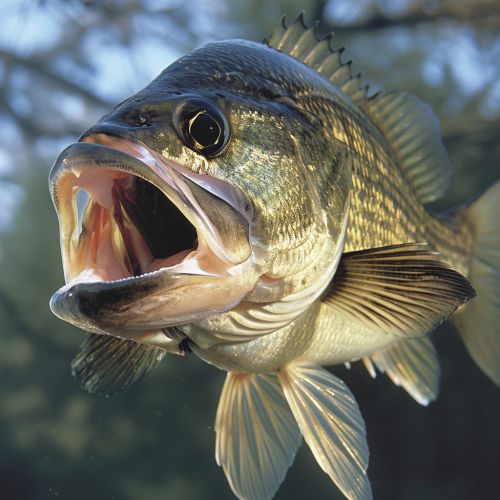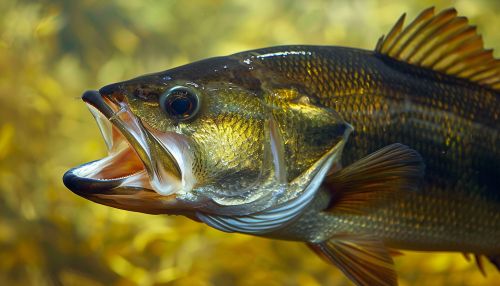Bass
Overview
The bass is a term that broadly refers to various species of fish within the order Perciformes or "perch-like fishes". The term is often used to describe several different types of saltwater and freshwater species, including the black basses, such as the largemouth bass (Micropterus salmoides), smallmouth bass (Micropterus dolomieu), and spotted bass (Micropterus punctulatus) of North America.


Taxonomy and Classification
Basses belong to various families within the order Perciformes. The largemouth, smallmouth, and spotted basses are members of the sunfish family, Centrarchidae. Other basses, such as the striped bass (Morone saxatilis) and white bass (Morone chrysops), belong to the temperate bass family, Moronidae. The sea basses, including the black sea bass (Centropristis striata), belong to the family Serranidae.
Anatomy and Morphology
Basses are characterized by their robust bodies, ctenoid scales, and a single dorsal fin that is often divided into spiny and soft-rayed portions. The mouth is large and terminal, and the jaws extend well beyond the rear margin of the eye in most species. The teeth are small and conical, and the pharyngeal teeth are used to crush the hard shells of prey.
Habitat and Distribution
Basses are found in a variety of habitats, ranging from freshwater to brackish and marine environments. They are predominantly found in the temperate and subtropical regions of the Northern Hemisphere, although some species have been introduced to other parts of the world.
Diet and Feeding Habits
Basses are opportunistic feeders and have a diverse diet that includes smaller fish, crustaceans, insects, and other invertebrates. They are ambush predators, often hiding among vegetation or in rocky crevices before launching a rapid attack on their prey.
Reproduction and Life Cycle
Most bass species are oviparous, laying eggs that are externally fertilized. Some species, like the largemouth bass, build nests for their eggs and guard them until they hatch. The life cycle of basses varies greatly among species, with some living only a few years, while others can live for several decades.
Economic Importance
Basses are of significant economic importance due to their popularity as game fish. Species such as the largemouth and smallmouth bass are highly sought after by recreational anglers, and numerous tournaments are held each year. Some species are also commercially harvested for food.
Conservation and Threats
While many bass species are abundant, some are threatened by habitat loss, pollution, overfishing, and the introduction of invasive species. Conservation efforts for basses include habitat restoration, regulation of fishing, and the establishment of protected areas.
